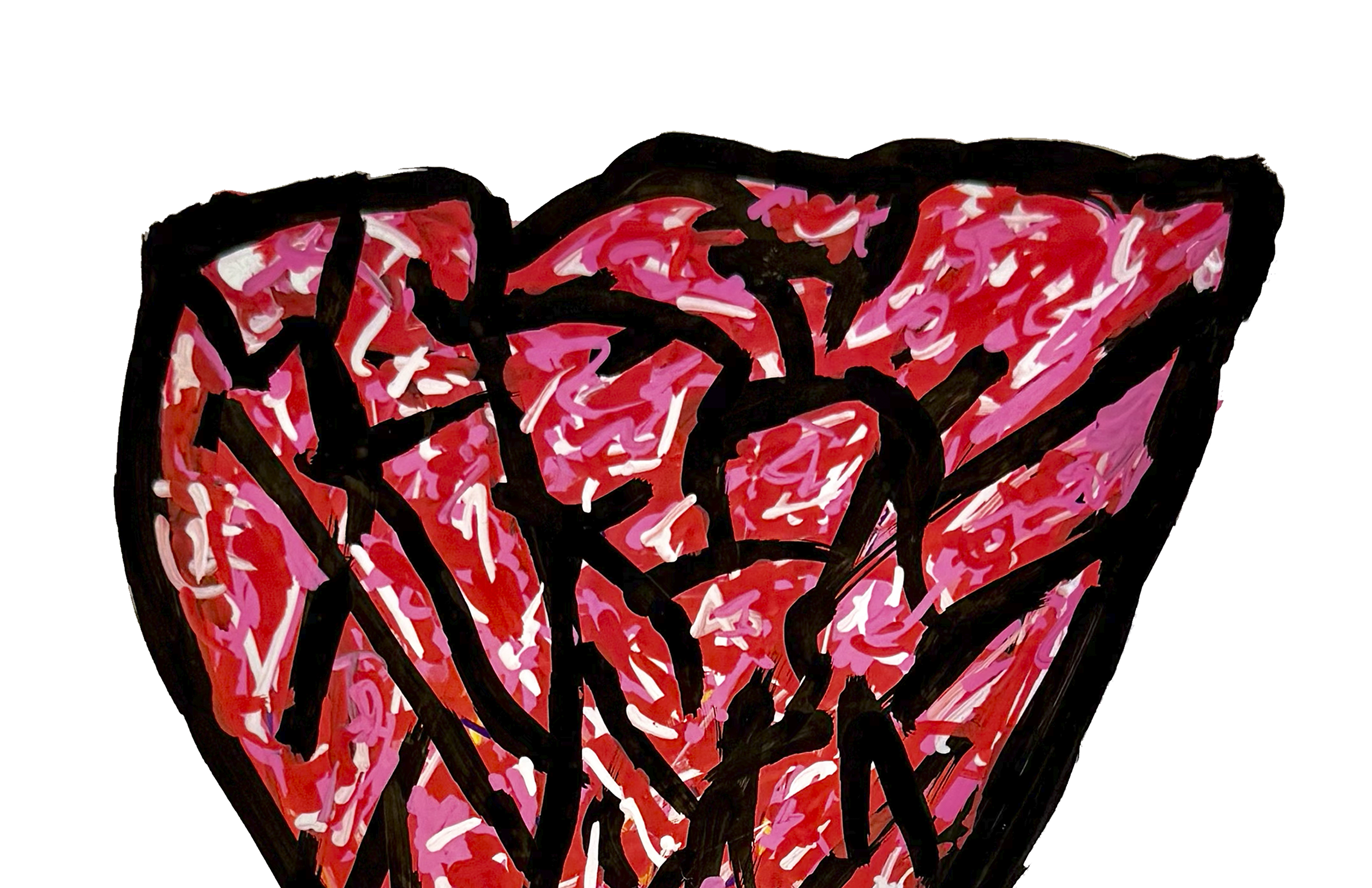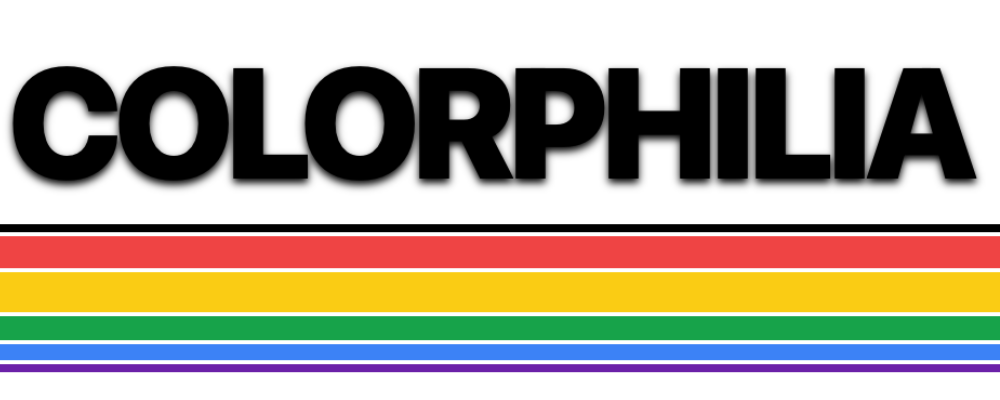Rethinking Pink.
A dispatch from Madrid, about Vilnius, Paris and Toulouse.

Greetings from Madrid. Es mucho calor aquí.
As I mentioned at the end of June, I'm travelling around Europe by train, or at least I'm trying to. Here's a list of where I've been so far.
Travelling is quite exhausting and as you'll see below, the first few weeks were quite emotional, so I've slowed down the pace. I'm finally getting back to writing, researching, and creating some art.
Litvak
I began my trip in Paris, and set out eastward, spending some time in Strasbourg and Berlin, before arriving to my first true destination, Lithuania.
However, soon after crossing the border from Poland into Lithuania, I received a voicemail that a fire had destroyed one of my two U-Boxes (shipping containers), which was being stored in a secure U-Haul facility in Chicago. Each container had held either 18 or 19 boxes of books, along with art I've collected over the past few decades, art I've created over the past half-decade, clothing, and other items I held dear. And just like that, I lost half the library I spent the past two and a half decades building.
But to understand why I shared the timing of the call and location where I was when I learned of the news, I need to share some personal context.
It would be my first time visiting Lithuania, the birthplace of my maternal grandparents, and where they lived until the Nazis place them on trains to concentration camps located in Poland.
I would learn during my trip that while most countries in Western Europe were expelling Jews, the 14th century Grand Duke Gediminas was expanding Lithuania's territories from the Baltic Sea in the north to the Black Sea in the south. On as color note, baltas in Lithuanian means "white".
To the chagrin of both the Eastern and Western churches, he lived and died a pagan, who was open to religious freedom, and welcomed Jews to live within Lithuania's expanding borders. Over the next 500 years, Jews not only lived there, but they thrived.
They came to be known as Litvaks.
Pink Soup
My first stop in Lithuania was to the city Gediminas built, Vilnius, known in Yiddish as Vilna. My friend Gediminas (no known relation to the Grand Duke) invited me to dinner of pink soup, right off a street called Gaono gatvė, or Gaon street, named after the 18th century Rabbi, known as the Vilna Gaon.
While many only associate his hyper-analytical style and his influence with the ultra-Orthodox Yeshiva world, most of which was founded by his students, and their students, it can also be found in the academic world, when studying Litvaks like the philosopher Prof. Emanuel Levinas, or in the world of behavioral economics, which originated in the work of the Nobel Laureate and Litvak, the psychologist Prof. Daniel Kahneman.
These aren't random or spurious connections for me. Beyond my having studied both of their work, there is a personal connection. Levinas was born in Kaunas, the same city as my maternal grandmother, and his book of Talmudic lectures was one of the books in my library. Kahneman's uncle was the founder of the Ponevezh Yeshiva, as well of the Rabbi of the city of Ponevezh, where my maternal grandfather was raised and lived.
Pink Soup Festival
But back to the pink soup.
Vilnius had just finished celebrating its Pink Soup Festival. It's just the traditional cold summer borscht with cream which mixes together to create this vibrant pink hue which Barbie would want to bathe in. They launched a very successful branding and advertising campaign embracing the color.
(They should have really had hired the singer Pink to help with the marketing. Pink is the stage name of Alecia Beth Moore-Hart, an American singer whose mother came from a Litvak family.)
I had travelled to Riga as well on the new Baltic train line connecting Vilnius, Riga, and Tallinn, and the entire interior of one of the train cars was pink, celebrating the delicious and colorful soup.
On the train wall was written: "Vilnius: Pink in the Summer. Always unexpectedly amazing." It sounds a lot better in the original Lithuanian and Latvian. Vasara Roza, or literally "pink summer". It also uses a word which seems to translated to surprise which brings on goosebumps.
Pink Spectacles
After my trip to the Baltics, I returned to Paris for a week. While there, I was invited by my friend Rabbi Amichai Lau-Lavie to spend Shabbat with a new small Jewish community called Hineni. As Shabbat was ending, someone began singing a song by Édith Piaf, and very quickly, everyone else joined it.
Afterwards, I spent some time going through her songs, and realized that her "La Vie en rose" was literally translated as "Life in Pink". It was written at the end of World War II, and is metaphorically understood to be about seeing the world through rose-colored glasses.
La Ville rose
Afterwards, I travelled around France for a week, including a stop in Arles, where Vincent van Gogh lived as a sunflower, before randomly ending up spending a week in Toulouse.
Toulouse is known as "La Ville rose" or "the Pink city", because of the terracotta color of the so many of the buildings. But as one local explained, it really looks pink when the setting sun hits the light reddish buildings.
Some Pink Things
Pink's etymology is complicated, to say the least. Before going into any of my wild theories, I just wanted to give an overview on things that were called pink and had nothing (initially) to do with the color.
Holes
This is one of the most basic origins of the word pink, as a verb from Dutch, coming from the word pin, as in something one sews with. Pink became associated with a lot of tailoring words because of that, like cutting fabric.
Eyes
Because a pin makes a small hole, and the word pink sounds like wink and blink, pink became associated with small eyes, or partially squinting eyes.
As William Shakespeare wrote in Antony and Cleopatra:
Come, thou monarch of the vine,
Plumpy Bacchus, with pink eyne.
In thy vats our cares be drowned.
With thy grapes our hairs be crowned.
Ships
Also from Dutch, there was a thin ship called a pink, probably because it was shaped like a pin.
Shakespeare writes in the Merry Wives of Windsor:
This punke is one of Cupid’s carriers.
Clap on more sails, pursue; up with your fights;
Give fire! She is my prize, or ocean whelm them all!
(Don't really bother yourself with the spelling, it's just an example.)
Fish
A type of minnow is also called a pink, with the word pinkeen being used as well in English. I'm assuming that it has to do with the size of the fish, and then it later came to include the color of the fish.
Dyes
There were different paint colors described as "pink", such as "Dutch pink", "brown pink", "English pink", "Italian pink", and "French pink". These colors were actually yellow, and were made from buckthorn berries, which again, I'm assuming, look like little eyeballs. Dutch pink is now known as Stil de grain yellow.
Flowers
Here's where things get interesting. There are flowers called pinks (gillyflowers) many of whose color were pink. In French, those same flowers were called œillettes, or "little eyes" which means that the reason they were called pink was because of their visual similarity to eyes. Additionally, in French, the œillettes included many more flowers that were not pink.
That said, flowers are likely where the word pink began to be used as a lighter shade of red, as I've discovered in some early 18th century English language gardening books. It became very easy to use to describe the different hues of red. But this does not extend to any other language.
But I don't believe that the color pink came from the flowers. There is a very simple basis to my belief: we keep seeing the color translated as rose in other languages, and the pinks (ie. gillyflowers) were definitely not roses.
Little Finger
So why is the little finger called the pinky? Sure, there may be a Dutch word pinkje, which would act as a diminutive of the word pink, but then you have to explain why pink is a finger. But pincer in French, means "to pinch" or "pluck" (or probably even "grab").
Alternative Pink Theory
Based on my initial research, I have several theories which may or may not be correct.
My basic hypothesis is that the color pink comes from the bird we call the finch in English. They used to be called pinçon in French, and many of them are predominately in varying shades of pink.
But wait, that sounds like a completely different two-toned flightless bird who lives in the global South, right?
We've already covered the pinguin or penguin, in the etymology of pie. The Eurasian bullfinch may be predominately the color pink, but it is a multi-colored, or pied, bird. Which means that the ping-/pink comes from the Latin root pingō, meaning to paint or color. And of course, penna meant "feather" in Latin, and we know that colors are named after bird feathers.
This doesn't discount the possibility that there exists a very circuitous relationship between the Dutch pin and the color pink. I saw a 19th century theory that they would use long thin pins (like pine needles, or pīnus) to paint, which evolved into the Germanic root.
Metaphorically Pink
Something fascinating then happened. Pink became a color in English. And people began translating everything rosa colored in other languages into pink in English. Rose-colored glasses became pink spectacles.
But rosa also had a metaphorical connotation of the best (with so many people mistranslating "a rose between the thorns"), so pink "borrowed" that meaning as well.
But it wasn't only that. "The pinnacle of perfection" became "the pink of perfection", or alternatively in a letter by Charles Dickens, "the very pink of hideousness and squalid misery".
FAQ
Why don't other languages need the color pink?
Because they have a word for rose already.
Does this connect, at all, to tulips?
Yes.
Does this mean that pink is not a color?
Pink is a color in the same way that English is a language.
Are you going to write weekly newsletters about color again?
Yes. I have a lot to write about.
